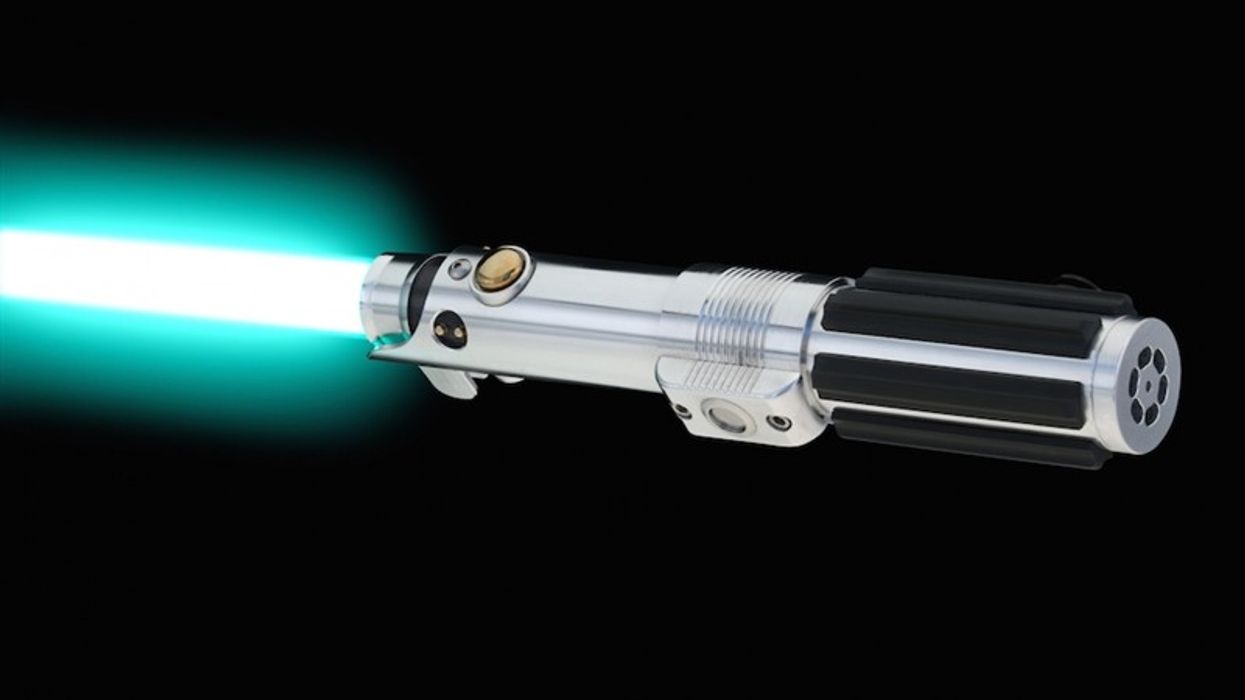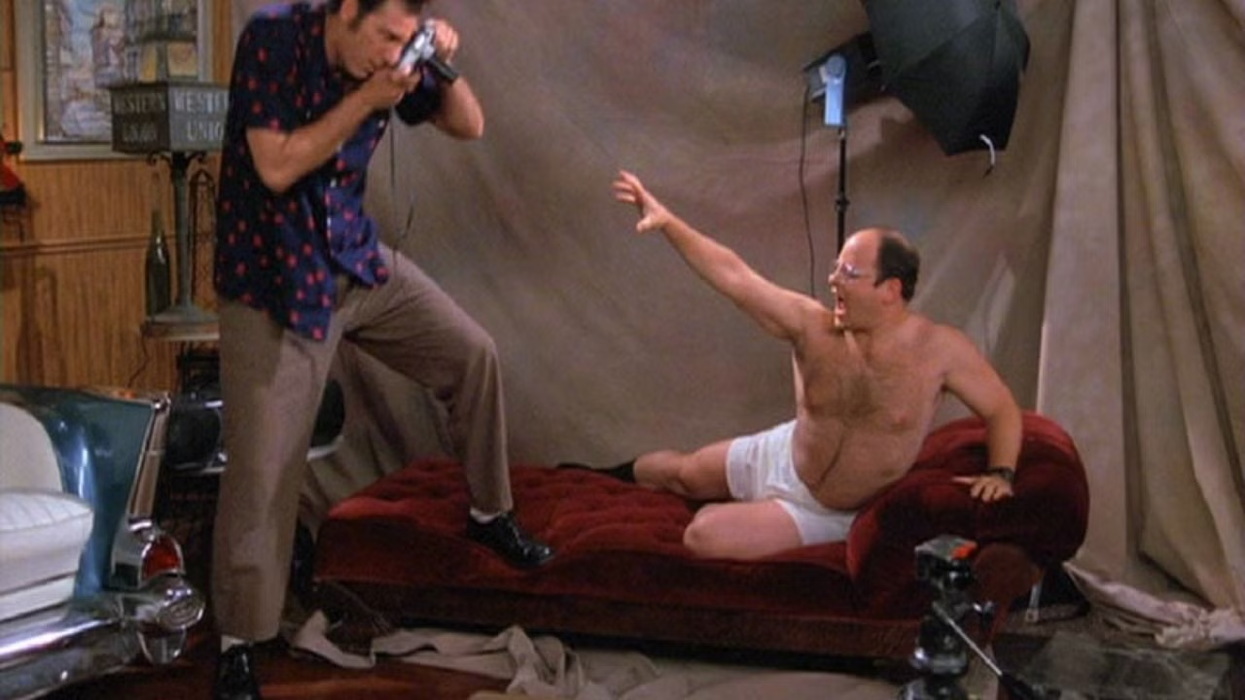Watch: 'Star Wars' Lightsaber is Actually Camera Tech from the 1930s
Did you know that the 'Star Wars' lightsaber is a flashbulb from an antique camera?

In his original vision for Star Wars, George Lucas designed his universe with a retrofuturistic aesthetic, otherwise known as "junk sci-fi" or "gomi." Opting for an unpolished and lived-in look, Lucas encouraged his team to be scrappy; the art department used practical effects and outfitted scenes with props transformed from junk.
Set decorator Roger Christian took this cyberpunk edict to heart. One day, as he was creating lenses to fit Luke Skywalker’s binoculars, he stumbled across a piece of junk that would become one of the most iconic weapons in cinema history.
"I went to a photography shop where we got all our equipment from and I asked, 'Have you got anything buried away that I might look at?'" Christian said in an interview. "Out of this box, I found these Graflex flash handles."
Thus, the lightsaber was born of a flash bulb from an antique camera. The Graflex 3-cell flashgun was originally designed to hold flash bulbs to vintage Speed Graphic cameras, affectionately known at the time as "press cameras," as they were used by photojournalists for the first half of the 20th century.
Christian attached a part of a calculator, added a black grip, and painted the bulbs with blue projection material. (It should be noted that while most of the lightsabers in the 1977 Star Wars were made of Graflex bulbs, Obi-Wan Kenobi's was devised of a ballast pipe from a Rolls Royce jet engine.)
Graflex, originally a division of the Eastman Kodak Company, first came to market with the Graflex SLR, a focal plane shutter camera that used the same swinging-mirror lens viewing mechanism as modern single lens reflex cameras. The Speed Graphic cameras from which Christian fashioned the lightsaber also employed a focal plane shutter, but replaced the SLR swinging mirror and through-the-lens viewing with an external viewfinder.
One of the two original lightsaber handles, made for $15, was sold to a Seattle museum for $250,000, making the lightsaber one of the most valuable movie props in history.











